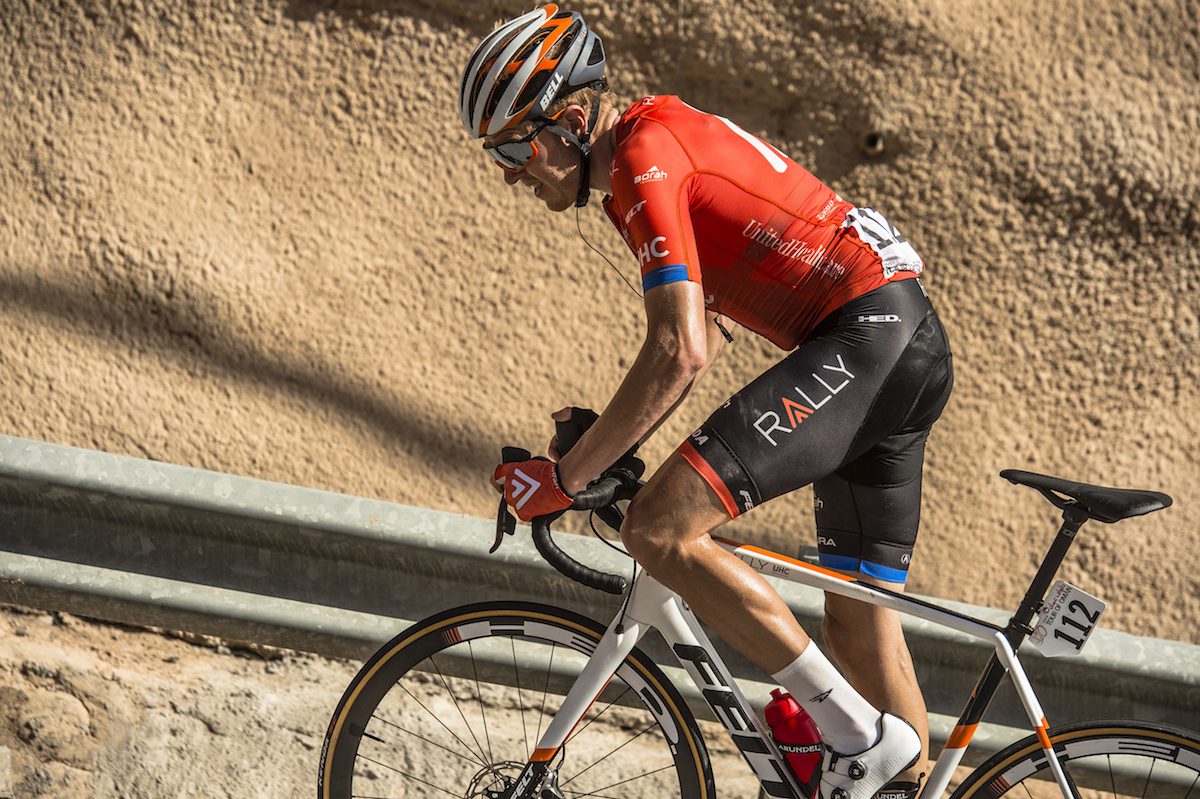Your 2020 cycling makeover
Improve your fitness, diet and even your happiness in the new year

By: Molly Hurford
Whether you admit it or not, if you’re reading this article right now, you secretly love the New Year’s resolution stories and probably have watched a Rocky-esque training montage while pedalling away on the trainer in your basement. You’re not alone. There’s a reason these articles are always in style. We all want to become better versions of ourselves, and there’s nothing wrong with that. For the upcoming year, we’re looking at four “makeover montages” you can have in your cycling life. You’ve seen these montages in film, as a character is transformed into a better version of herself. For you, the makeovers include your fitness, food, mindset and happiness in the sport. In each, you have three options: a small change, like getting new cleats for your shoes; a medium-size change, like buying a new kit; and a major makeover moment, like the feeling you get on #NewBikeDay. Just remember, in real life, a makeover doesn’t happen in three minutes, it happens throughout months of steady work and habits. Sure, it’s not quite as glamorous in real life, but it’s the only way to create lasting change.
Makeover your fitness

Stand up more
“Learning to stand as you sprint or climb hills is important for almost every cycling discipline. The fastest people stand a lot and are comfortable and efficient doing it,” says Smart Athlete coach Peter Glassford. It also gives your butt a break, so if you’re prone to saddle sores or numbness while pedalling, standing might be the solution you’ve been looking for. During rides, try to stand for just a few pedal strokes every couple minutes. To improve your standing sprints and hill climbs, make sure you’re actually practising them. Stand to sprint for the town line or practise an uphill sprint on that 10-second climb near your house.
Add variety to your weekly training
“Mix up the riding that you’re doing,” says Glassford. “So many riders, especially those with limited time, stick to one type of ride on the same roads every day. That one type of ride may have gotten them to their current fitness levels, but it often won’t get them past it, especially when they can’t fit any more riding into their schedules. To move past this level, start riding easier some days, but include skills, co-ordination and cadence work. Keep these rides low intensity so that on another day of the week, you can really attack a harder ride and hit your intervals feeling fresh.”
Start working with a coach
A coach won’t just help you figure out what Zwift ride you should do this weekend – a good coach will work with you to target weak points, like your mobility or strength, and help you tailor a training schedule to your specific needs, goals and time constraints. For example, Glassford finds that most of his athletes can benefit from sneaking in a quick strength-training workout even on a busy schedule. “Strength training can often be fit in at lunch in less than 30 minutes and adds a workout, plus training stress, to the weekly schedule without much disruption to family or work life,” he says. “This can be a huge boost to training by adding another workout, and also by enhancing movement ability, resilience and strength.” Not into the commitment or cost of a full-time coach? You might benefit from even a quick consult to talk through your upcoming goals. You’ll likely discover ways to tweak your training.
Makeover your mindset
Write your mantra for the year
“Find a statement that’s easy for you to call to mind, one that makes you feel awesome, one that’s going to start something great in your mind. That’s what your mantra should be,” says sports consultant Traci Stanard. For example, professional mountain biker Rebecca Rusch has been telling herself “I can, I will, I will not be denied,” since she was a teenager. Take your 2020 mantra to the next level by printing it on a vinyl sticker and placing it on your bike’s top tube so you’re reminded of it every time you ride.
Keep a daily gratitude journal
Take your training log to the next level by adding a line about one thing you’re grateful for today after making notes about your workout. Expressing gratitude can make you healthier, less stressed, and even help you make new friends. Stacking the habit of writing a gratitude journal on top of recording your training log can make it a much easier habit to adapt. “That small accomplishment of listing something every day can be really powerful,” says Stanard. “The reason a habit like making a bed every morning is great is because it gives you a small win right away. The same is true of a daily journal like this.”
Meditate
You probably don’t need to hear, yet again, about the many benefits of meditation: decreased stress, reduced anxiety and even modified brain patterns that can improve your attention span. Despite all the benefits – and lack of any negative side effects – most people have a hard time committing to the process. Make 2020 the year you find your Zen side, whether you spend five minutes in the morning with a free app, such as Oak, that plays gentle white noise in the background, or you spend 20 minutes a day practising in complete silence, or you just pause for 10 slow, deep breaths during your lunch break. Learning how to meditate before things get stressful can help when you’re getting freaked out on race day.
Makeover your diet
Optimize your omega-3 intake
One of the smallest, simplest changes you can make to your diet is making sure you’re getting a daily dose of omega-3 fatty acid, the healthy fat that promotes brain health, reduces inflammation and improves metabolism. But don’t just reach for a supplement. Dana Lis, a researcher and dietician for high-level elite athletes, recommends getting your daily dose via hemp hearts, flax seeds, olive oil or fatty fish.
Add an antioxidant to every meal
Rather than focusing on subtracting things from your diet this year, try adding something – namely, a serving (at least) of fruits or vegetables to every meal. “You’ll boost immune function and have better cellular recovery plus better adaptations to training,” says Lis. Not only will you be getting more antioxidants by adding dark leafy greens, berries and other brightly coloured fruits and vege- tables, you’ll also gain micronutrients, anti-inflammatory compounds and fibre. Bonus: add more of these foods and you’ll be less inclined to pile your plate with extra junk food in the process.
Periodize your fuelling
“You want to fuel for the work you’re demanding of your body,” says Lis. “That means shifting what’s on your plate. If you have a big ride, then you want a plate that’s heavier in carbohydrates, along with a healthy fat, protein and vegetables. If you’re on a rest day, you can lighten your plate with a smaller amount of carbohydrates.” For easy reference, try to start with roughly a palm-size serving of protein, a thumb of healthy fat, a fist of carbohydrate and as many vegetables as you want.
Makeover your bike love

Try a new race
Not feeling excited about race season? You don’t have to switch sports, just sign up for a new style of race. Road racer Robert Gutgesell’s specialty was the time trial – spending hours every week practising specific wattages for specific times in straight lines on perfectly paved roads. After years of road racing at a high level and of maintaining the necessary commitment to his sport, he was getting worn down. On a whim, he signed up for a gravel race, and everything changed. “The gravel courses are way more fun,” he says. “After years of racing around a small circuit, long, interesting gravel roads were such a great change and challenge.”
Put a big goal on the calendar early
Find a bucket-list event that piques your interest. Maybe it’s something as big as the BC Bike Race or Singletrack 6 stage races, maybe it’s an early season gravel race, maybe it’s a cycling tour in Spain or Italy or maybe it’s just a goal of riding 100 miles in April with a group of friends. Find a goal that’s just a little bit scary and involves a commitment of time and/ or money, and put it on the calendar. Having a big goal or an event that sounds exciting on the calendar will keep you on the trainer or outside cross-training instead of huddling inside and binge-watching a series on Netflix. “It’s very motivating to have an event to look forward to during the depths of winter,” says Kate Sparling-Holmes, who puts the Roam women’s cycling festival on her calendar for May every year. Having that early-season event makes it easier to stay on track with training even when the days are short and the nights are long.
Try something completely different
If you’re feeling meh about racing this season, try swapping racing for adventure. That might mean switching from cyclocross to gravel racing, shifting from cross country mountain biking to enduro, or road racing to bikepacking. “I had a couple pretty bad crashes on the road, and I was getting tired of travelling across the country to race a couple times for an hour or two at a time,” Gutgesell says. “That made me shift my perspective: I didn’t want to race in a professional capacity anymore. It started to feel like the downsides outweighed the fun. I started riding more gravel at home and realized I loved the training. I could mountain bike, I could run, I could explore new roads and it was all part of race prep.” Look for the more adventurous and less competition-focused version of the style of racing that you once love.


